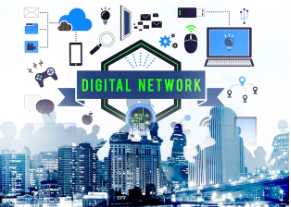In today’s digital age, data is generated at an unprecedented rate from a multitude of sources, including social media, sensors, transactions, and more. The ability to analyze and derive meaningful insights from this vast amount of data, known as Big Data Analytics, is transforming industries and driving innovation. This article delves into the fundamentals of Big Data Analytics, its applications across various sectors, and the potential it holds for the future.
1. Understanding Big Data Analytics
Big Data Analytics involves the process of examining large and complex data sets to uncover hidden patterns, correlations, trends, and other valuable insights. This process leverages advanced analytical techniques, including machine learning, data mining, predictive analytics, and statistical analysis. The three key characteristics of big data are volume (the amount of data), velocity (the speed of data generation), and variety (the diversity of data types).
2. Key Components and Technologies
Data Collection: The first step in Big Data Analytics is gathering data from various sources, including structured data (e.g., databases) and unstructured data (e.g., social media posts, videos, emails).
Data Storage: Big data requires robust storage solutions capable of handling large volumes of data. Technologies such as Hadoop Distributed File System (HDFS) and cloud storage platforms are commonly used.
Data Processing: Processing big data involves cleaning, transforming, and organizing the data for analysis. Tools like Apache Spark and Apache Hadoop are popular for their ability to process large datasets efficiently.
Data Analysis: Advanced analytics tools and techniques, including machine learning algorithms, natural language processing, and statistical models, are used to analyze the data and extract meaningful insights.
Data Visualization: Presenting the analytical results in a comprehensible and visually appealing manner is crucial. Visualization tools like Tableau, Power BI, and D3.js help create interactive and informative dashboards and reports.
3. Applications of Big Data Analytics
Healthcare: Big Data Analytics is revolutionizing healthcare by enabling personalized medicine, improving patient outcomes, and optimizing hospital operations. Analyzing electronic health records (EHRs), wearable device data, and genomics data helps in early disease detection, treatment planning, and patient monitoring.
Finance: In the financial sector, big data analytics enhances fraud detection, risk management, and customer insights. Analyzing transaction data, market trends, and customer behavior helps financial institutions make informed decisions and develop targeted products and services.
Retail: Retailers leverage big data analytics to optimize supply chain management, enhance customer experiences, and drive sales. By analyzing customer purchase patterns, preferences, and feedback, retailers can offer personalized recommendations, manage inventory efficiently, and improve marketing strategies.
Manufacturing: Big data analytics improves manufacturing processes through predictive maintenance, quality control, and supply chain optimization. Analyzing machine sensor data and production metrics helps manufacturers reduce downtime, enhance product quality, and streamline operations.
Smart Cities: Big data analytics plays a pivotal role in developing smart cities by optimizing traffic management, energy usage, waste management, and public safety. Analyzing data from sensors, cameras, and IoT devices helps city planners and administrators make data-driven decisions for sustainable urban development.
4. Challenges and Considerations
Despite its potential, big data analytics faces several challenges, including:
Data Privacy and Security: Ensuring the privacy and security of sensitive data is paramount. Implementing robust data protection measures and complying with regulations such as GDPR and HIPAA is essential.
Data Quality: The accuracy and reliability of analytical insights depend on the quality of data. Ensuring data accuracy, completeness, and consistency is crucial for meaningful analysis.
Scalability: As data volumes continue to grow, scalable storage and processing solutions are necessary to handle the increased load efficiently.
Skill Gap: The demand for skilled data scientists, analysts, and engineers often exceeds supply. Investing in training and education is crucial to bridge this gap.
5. Future Outlook
The future of big data analytics looks promising, with advancements in artificial intelligence (AI), machine learning, and cloud computing driving innovation. AI-powered analytics will enable more sophisticated and real-time data processing, uncovering deeper insights and automating decision-making processes. Additionally, the integration of edge computing will allow for real-time analytics at the data source, reducing latency and improving efficiency.
Conclusion
Big Data Analytics is a powerful tool that drives insights and innovation across various industries. By harnessing the power of data, organizations can make informed decisions, optimize operations, and create new opportunities for growth. However, addressing challenges related to data privacy, quality, scalability, and skills is crucial for maximizing the potential of big data analytics. As technology continues to evolve, the impact of big data analytics will only grow, shaping a smarter and more data-driven future.







